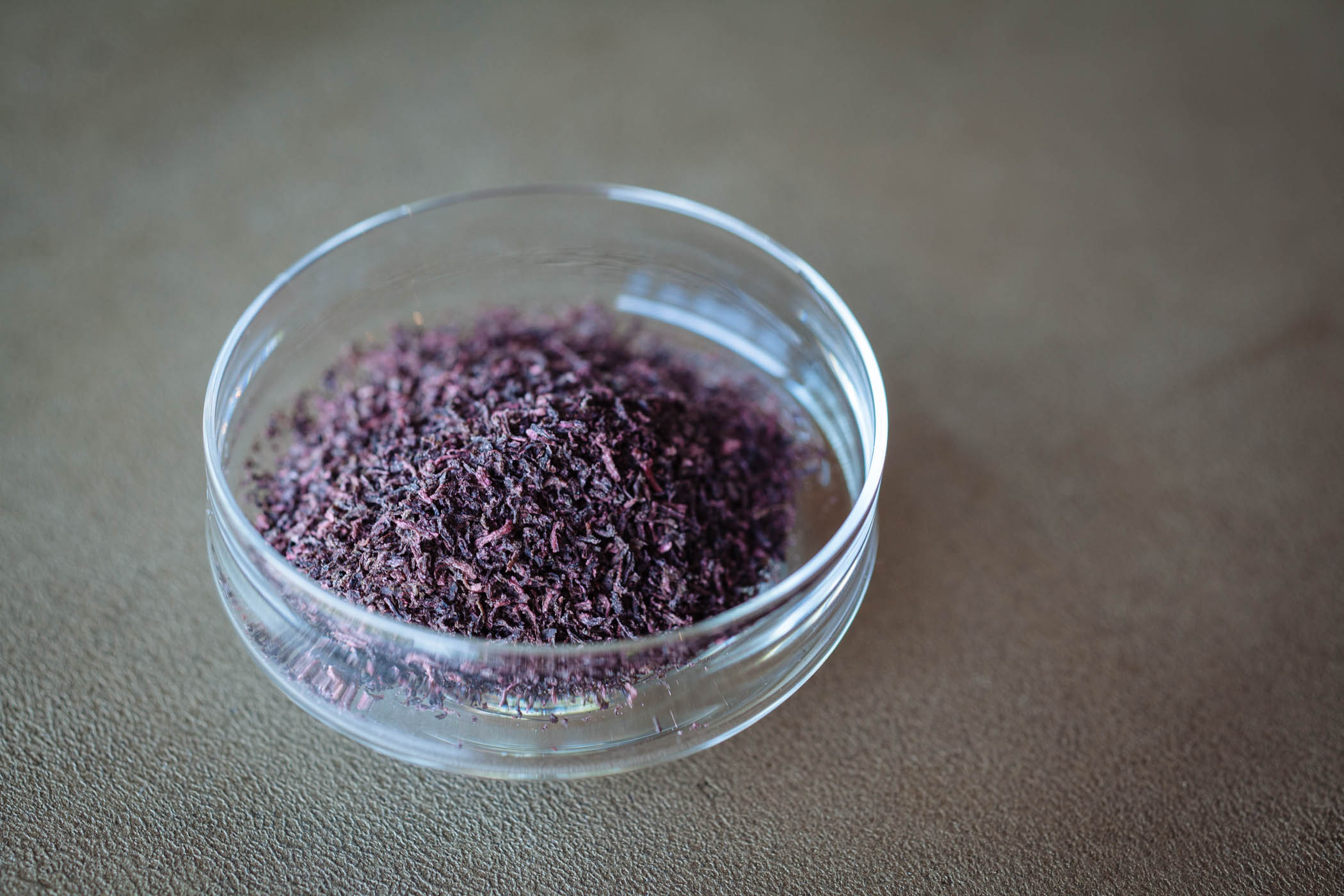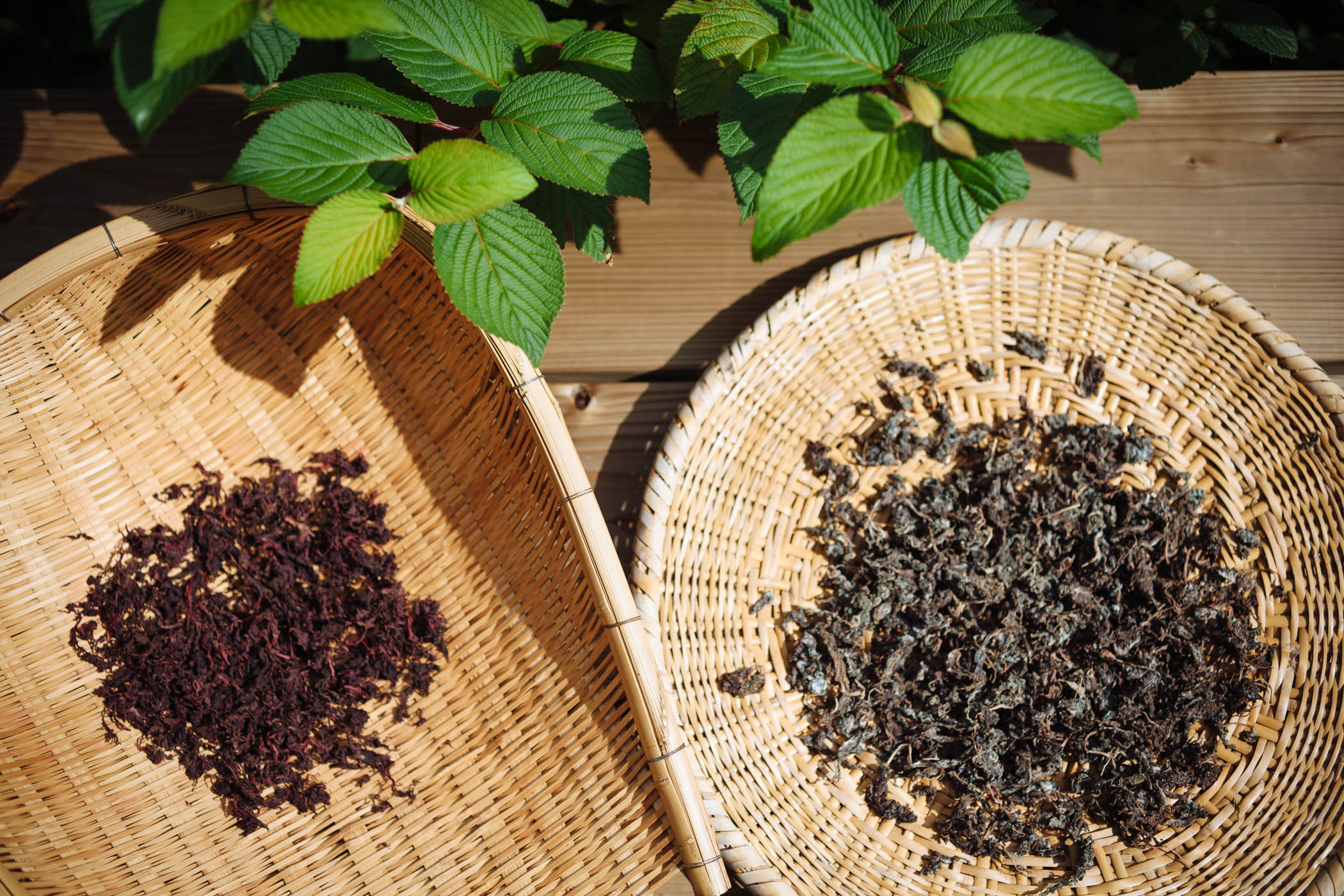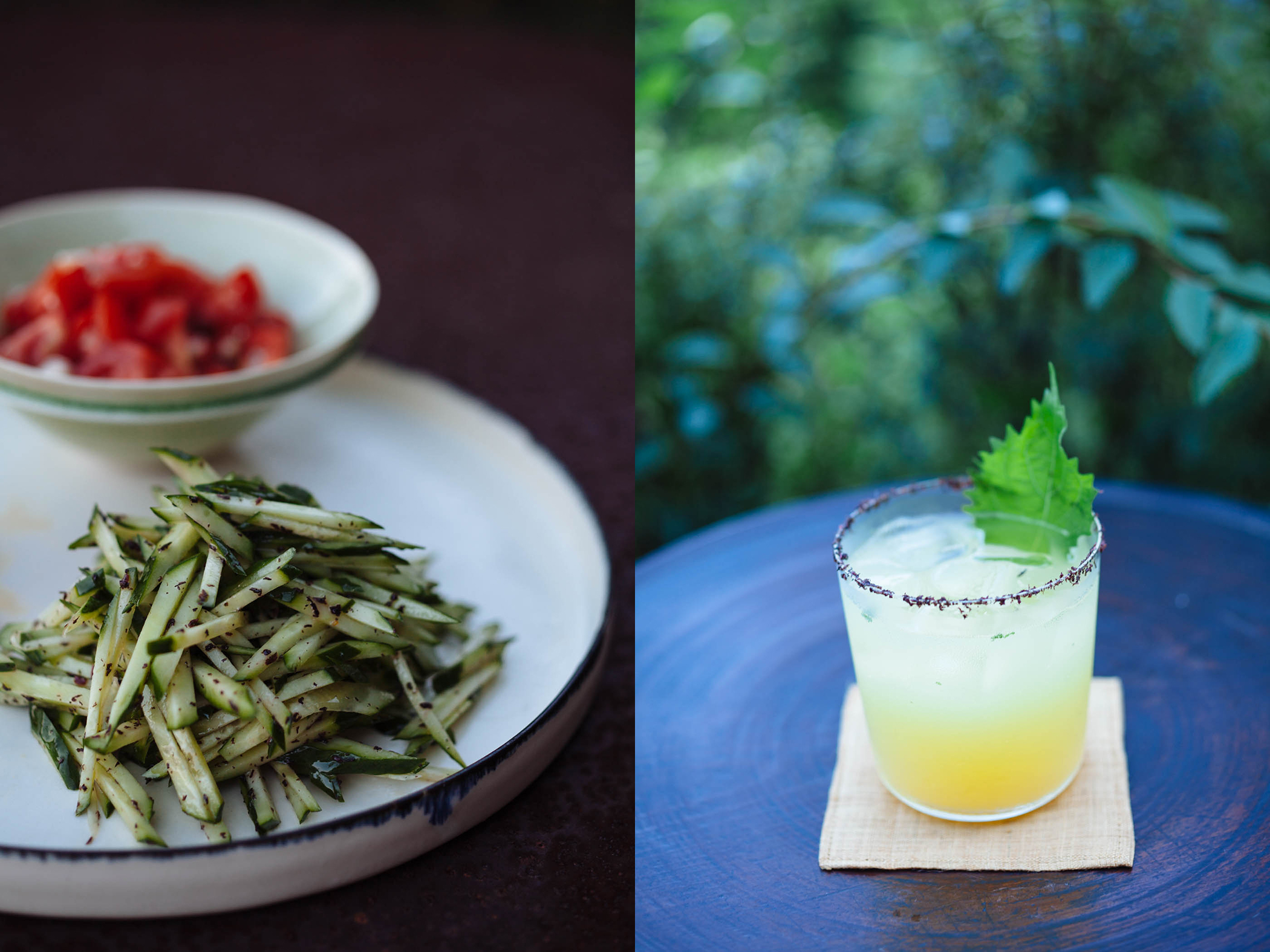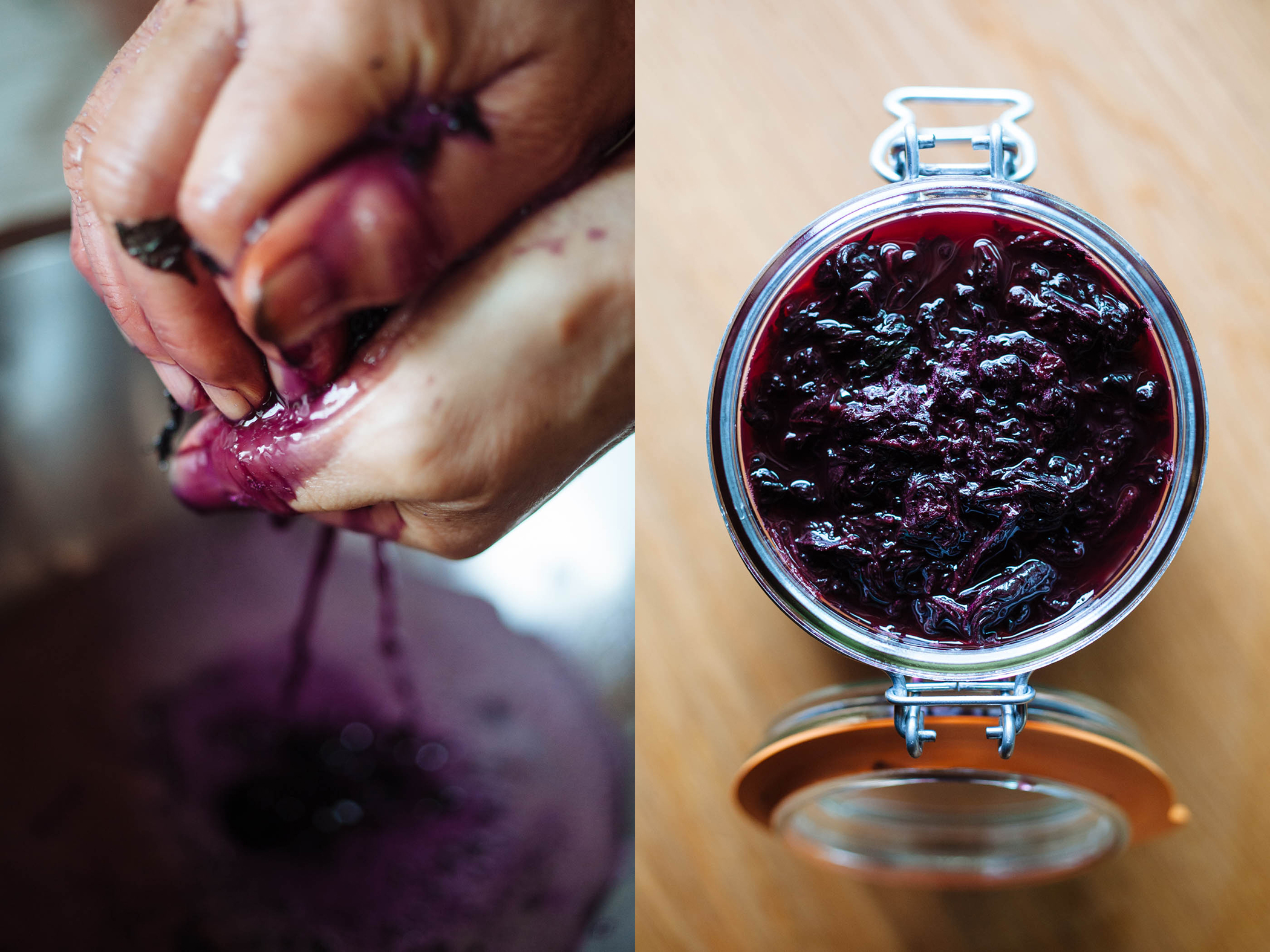Celebrating shiso at the apex of summer

We are at the apex of summer, which in Japan is already deemed to be the start of autumn. This is the custom here, to look ahead with anticipation towards the beauty held within the bud rather than be reminded by a flower in full bloom of its swift passing. And indeed autumn is just around the corner. Stray fallen green chestnuts dotting country lanes tell us that the flavors of fall are ripening in the branches of trees and sprouting roots underground.
But summer’s glory seems to have only just begun and fruity herbaceous flavors fill us with a carefree lightheartedness that matches the sweltering weather, the chattering birds, and the frantic cry of cicadas and crickets – all off us trying to get as much living in as we can while the sun still shines.


When I first took lead in making umebosi six years ago after Kuniko’s stroke, I drew on the copious notes I had made from the year before. I understood theoretically about red shiso’s role in imparting color to the plums but the year she taught me to make umeboshi the shiso wasn’t ready before I had to leave for the States. So I never learned the proper ratio of shiso to plums. And after her stoke when I made them solo for the first time, Kuniko couldn’t recall how much shiso to use. So when I went to my local market to place an order and they suggested one bundle (8 or so stalks) per kilo of ume, I ordered 50 bundles of red shiso to stain 50 kilos of ume. Well the umeboshi from that year are a distressing purple that still draws a cringe when I see them there in the pantry.
The following year I halved the amount of shiso and spent a late June morning washing and drying the purple leaved stems on the balcony and plucking each leaf while checking for bugs. I began processing the leaves, salting them and gently massaging them to start the flow of colorful juice. Handful by handful I added them to the buckets of ume. It quickly became clear that even half the amount of shisho would be too much, so I halved it again. The color from that year is much closer to the lovely pink orbs that Kuniko always made.
But what to do with the great pile of fresh clean shiso leaves left over? They needed to become something. Rooting around in Kuniko’s pantry I found a jar half full of several-year-old umezu, the plum vinegar brine reserved after the umeboshi has been eaten. I salted and massaged my left over red shisho leaves to remove any bitterness and added them to the brine. I tucked the jar away, left for the States, and thought no more of it.


The shiso pickled together with umeboshi is called tsukejiso and there is much to do with this shiso. After its done its duty staining the umeboshi and sealing it in throughout the long journey to maturity, there are wonderful uses for the ume infused salty herb. I dry it in the sun for a day or two and grind it up to make a shiso salt called yukari. It’s a fresh alternative, with tart undertones, that adds a summery salinity to summer vegetables, picnic onigiri, cocktail rims, and much more.
Our tsukejiso spends so many years tucked away with the ume that it fades to black. But the left over shiso that went straight into the already stained brine of umeboshi has never had to lend its color to several hundred plums and remains a deep, rich shade of purple. It imparts a lovely color and flavor when chopped and added to a freshly cooked pot of rice. Onigiri made with this salty shiso infused rice are delicious and the purple flecked triangles of pure white rice are the loveliest addition to a summer picnic.


Shiso is a quintessential Japanese herb but it is by no means limited or exclusive to Japan’s terroir. Many friends and acquaintances grow it in their home gardens as its an easy herb to grow. Many years ago Hanako gifted my mom, an avid gardener, some shiso seeds and within days of planting they had shot out of the ground. Not familiar with shiso, my mom finally asked Hanako to take a look and tell her if it was ready to harvest. By the time we visited to check on its progress, they had grown into the largest shiso plants Hanako had ever seen in her life. Like mint, controlling the bounty may be the harder task. If left unchecked shiso will pop up in places you never planted it and thrive. I’ve been asked on more than one occasion, what can I do with all of this shiso!?! To which I say, what can’t you do with shiso? If it’s green, throw it in salads, cut it into ribbons to top a bowl of quinoa or beans, sauté it in butter to garnish a steak, muddle it in a cocktail, or infuse a simple syrup for sorbet. If it’s red, make syrup, make juice, pickle it and make yukari!